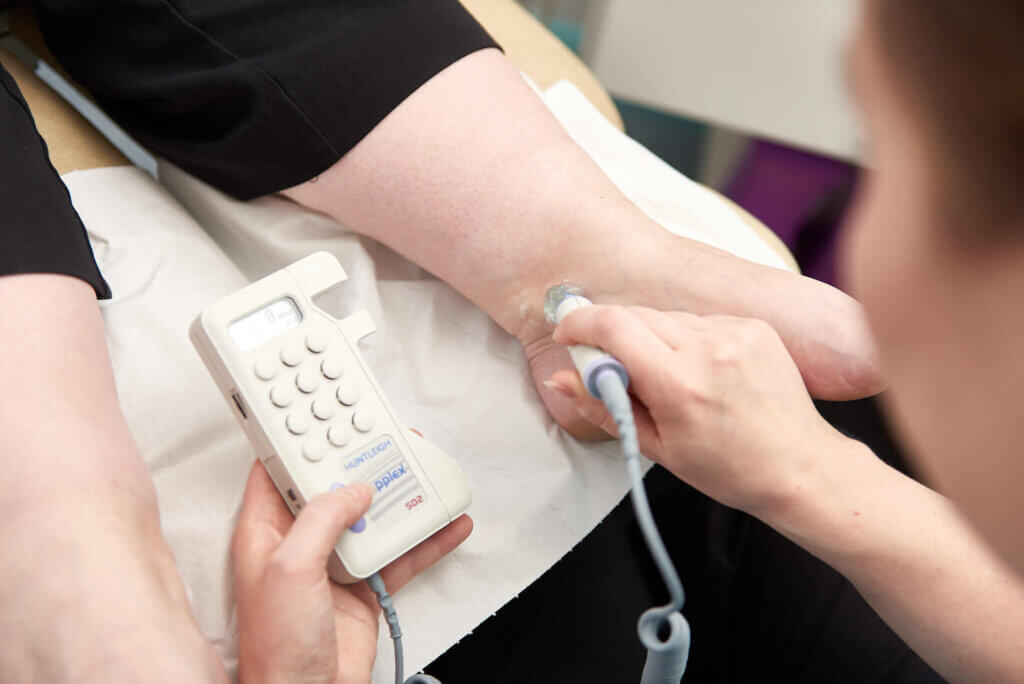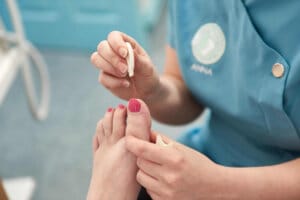
Diabetic Foot Checks – What and Why Edit
Diabetic foot checks – what do we do and why
Diabetic foot checks are a big part of what Podiatrists do. But what are they and why do we do them?
Both Anna and Nikki worked for many years in the Diabetic Foot Team in the NHS in Huddersfield.
Why can Diabetes mean foot problems?
If your blood sugar levels are raised, it can cause damage to the nerves that supply your feet. There are many different types of nerves that carry out different functions (moving your muscles, detecting pain, light touch etc.), but the nerves that detect pressure and pain are of the most concern. If you are not able to feel pressure or pain in the feet, then damage can be done to the skin and tissues below without you realising. For example, if you put on a new pair of shoes and they start to rub, your nerves will detect this and let you know, so you can change your shoes. If your nerves are not functioning as they should, you could keep walking and not realise the damage that is being done. Untreated issues in Diabetic feet can lead to ulceration, chronic wounds and, worst case scenario, gangrene and possible amputation.
How else are they affected?
High blood sugar levels can also cause damage to the circulation. Along with other factors such as high blood pressure, high cholesterol, age, smoking etc., uncontrolled Diabetes can cause the arteries to become narrowed and less elastic, leading to a reduction in the blood flow to the feet and legs. This can mean that any cuts, grazes and wounds can take longer to heal, and are at a higher risk of developing infections.
How do you check the feet?
In a Diabetic Foot Check, firstly we check the feet over visually. This is to see if there are any pressure points (corns, callus etc.), and colour changes in the skin and to assess skin quality. Then we do a quick circulation and sensation check. To check the blood flow, we use a Doppler to listen to the pulses in the feet and ankle. From the sounds that the Doppler picks up, we can get an idea of the quality of the blood flow and condition of the arteries.
Next, we use a small nylon filament to dot onto the feet to assess the sensation. The filament buckles under 10g of pressure, which research has shown can be the threshold for skin damage if prolonged.
What then?
Based on the findings, we assign a rick category. 0 is no issues. 1 is slight risk, 2 is high risk of complications, and 3 is an ulcerated foot.
If you wish, we can send a copy of our findings to your GP. If there is any high risk or a need for onward referral to, for example, the Vascular team, we would always refer on.
Remember – when looking for foot care, always check the qualifications of anyone treating your feet. Where possible, look for an HCPC registered Podiatrist. You can check the HCPC register here.
For more information on Diabetic foot care – see the Diabetes UK website here.
Anna Conway
BSc (Hons), MCPod, SRCh, PGcert Podiatry
Owner, Lead Podiatrist


